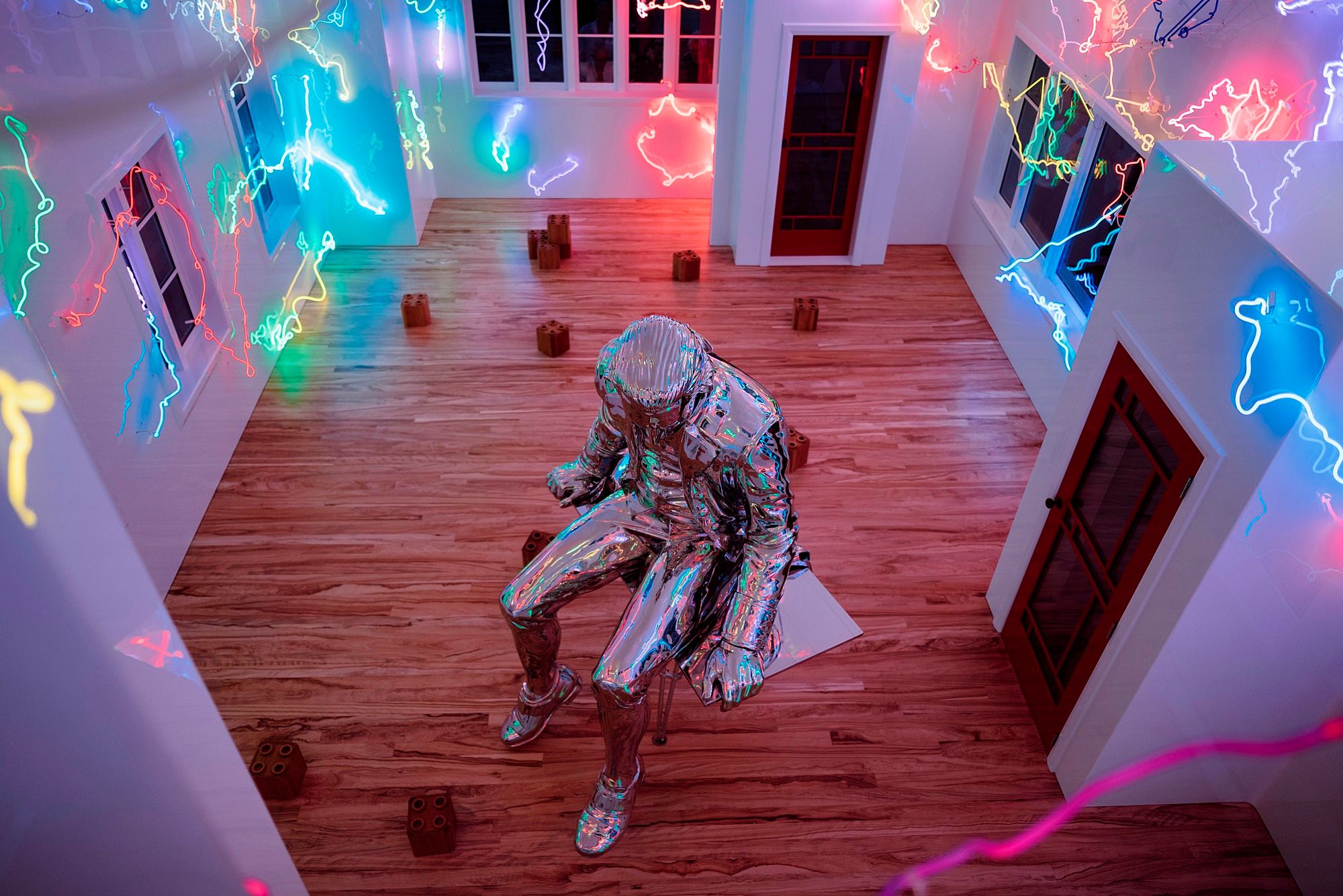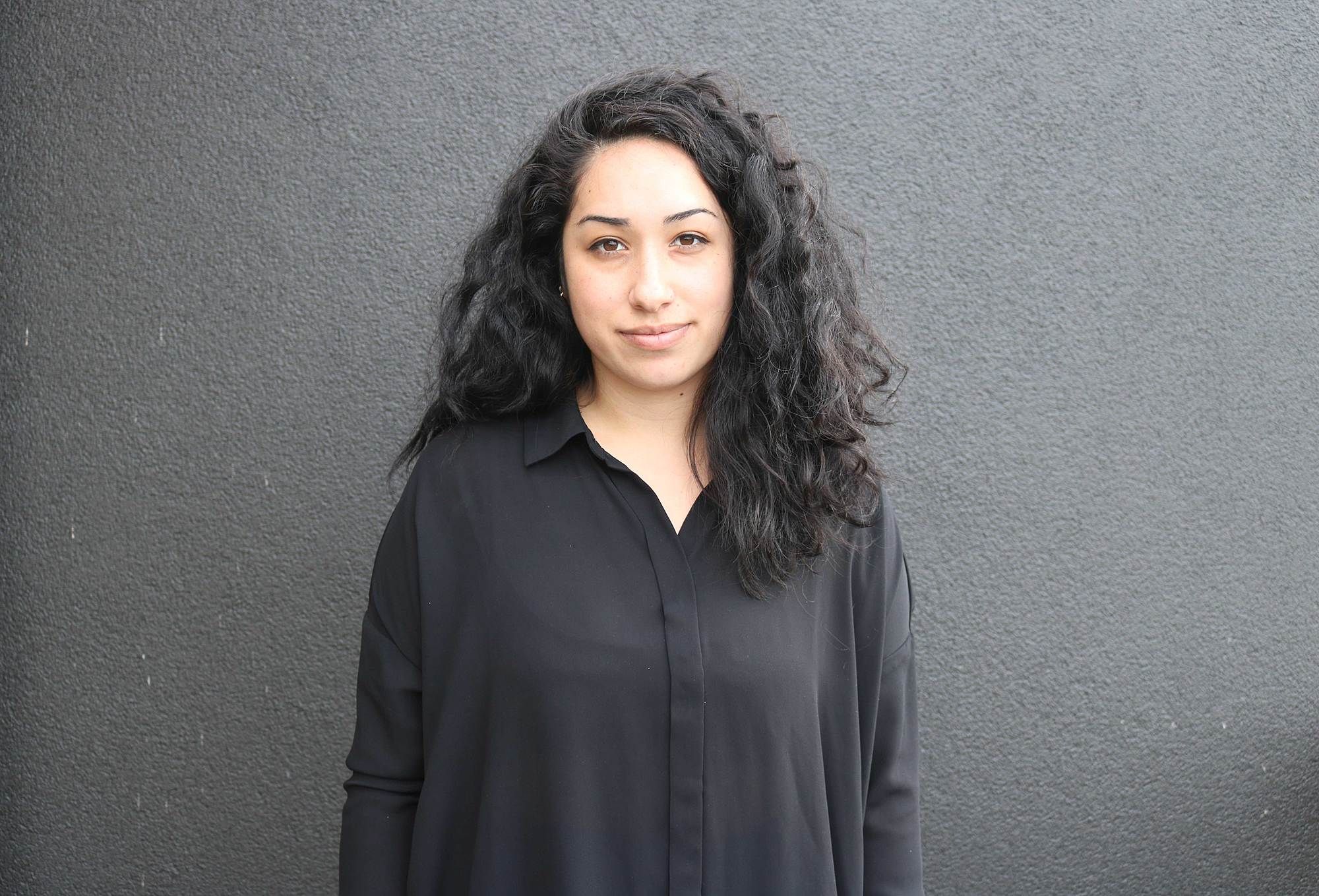An Homage, a Beacon: On Michael Parekowhai's 'The Lighthouse'
What do you expect public art to do? Lana Lopesi reflects on Michael Parekowhai's 'The Lighthouse', a new work on Auckland's waterfront that's been causing a stir.
What do you expect public art to do? Lana Lopesi reflects on Michael Parekowhai’s The Lighthouse, a new work on Auckland’s waterfront that’s been causing a stir.
We are socialised to devalue art from the very beginning. As children, we are introduced to art not as a serious, career-defining subject like maths or English, but rather a fun, messy diversion for a Friday afternoon. As we get older, we witness the role of the artist in movies and on TV. The archetype is generally an unstable and morally dubious figure (think House of Cards’ Adam Galloway or the ‘next Andy Warhol’ from Empire, both of whom were created to seduce lead characters into adultery), a struggling or con artist, who bends the rules to sustain an alternative lifestyle most of us can’t have. Scepticism towards art is continued by the news media. TV One’s beloved Hillary Barry recently dismissed a work in the current Sculpture on the Gulf exhibition with, “Oh, come on.” Nothing more.
Even before construction had started, Michael Parekowhai’s The Lighthouse ... was causing a stir.
If we are wary of art in general, we seem to be especially cynical when it comes to public art, the art that’s supposedly made for us all. Even before construction had started, Michael Parekowhai’s The Lighthouse – a major work on Auckland’s waterfront, which officially opened to the public on Saturday evening – was causing a stir. Many readers will already know the story. It all seems to hinge on ideas of ethics. The ethics of the cost of public art and of public art’s responsibility to its audience.
Parekowhai (Ngāti Whakarongo, Ngā Ariki) is one of our most progressive artists, and is highly regarded both here and abroad. He represented Aotearoa at the Venice Biennale in 2011. 2015 saw a major exhibition of his work mounted at QAGOMA in Brisbane. He is best known for his large-scale sculptures. So it was no surprise when he revealed plans to build his largest sculpture to date as a part of an Auckland Council commission. The work is a 1:1 scale model of a 1950s family home, which rests on a large, jetty-like deck. The exterior is painted in marine tones, and embellished with copper spouting and shutters reminiscent of tukutuku panels or warning signage. The interior is an explosion of colour. Neon representations of Southern Hemisphere constellations cover the glossy walls of the single, open space, scattering light over a huge, stainless-steel statue of Captain James Cook. Later this year, neon facsimiles of signatures from the Treaty of Waitangi arranged in the form of the Matariki star cluster will be installed on the floor, completing this ambitious and multi-layered work.
Unlike many public artworks, this one has had essentially no public funding. While the sculpture was commissioned by Auckland Council, it was in fact funded by the real estate firm Barfoot & Thompson, which contributed $1 million (the largest monetary gift for a single artwork in New Zealand’s history), and by private donors, who provided an additional $500,000. You might think that this would save the work from the usual criticism, since the only ‘ratepayer’s money’ used was administrative. In fact, money is where the controversy really starts.
What seems to have infuriated many people is the fact that $1.5 million has been used to build a fake house in the midst of a major housing crisis, instead of being used to ease that crisis. That the work is clearly based on a New Zealand state house adds insult to injury, since it is widely understood that our legacy of public housing is crumbling. That the project has been funded by a business that profits from the housing crisis and advanced by the Council, which is complicit in processes of gentrification in areas like Glen Innes, is simply beyond the pale. A well-reasoned and articulated version of this argument can be found in a Metro article by (Pantograph Punch Editor-in-Chief) Janet McAllister, who begins:
Judging by the plans, Michael Parekowhai’s state-house sculpture on Queens Wharf is going to look fabulous – but what it represents is anathema to me. I disagree with Anthony Byrt that any barb the sculpture makes about gentrification is “made a little spikier by the fact that its main funders are also the city’s most powerful realtors”. Instead, the money is a sign of approval from an industry that has profited from the privatisation of the same public asset depicted. The sculpture becomes a scalp, a triumphant house-seller trophy.
Of course, one can turn this criticism on its head and suggest, as Byrt has repeatedly done, that The Lighthouse may be understood to direct our attention towards the issue of housing. For the most part, however, the public seems to have come to the same conclusion as McAllister. Comments in response to the deluge of news articles about the work testify to this: “Meanwhile in New Zealand with 42’000 homeless. While we have a housing crisis that the national govt wont admit 1.5 million is spent on a statehouse sculpture”. “Waste of money. Should have built a real state house that would give 5 people a home for the next 100 years. Only kiwis will know what it represents and I would say over half will not appreciate it and think what a waste. I am one of those.” “This is the most insulting thing i have ever seen for homeless people to see and for ordinary taxpaying kiwis who’s taxes bought and paid for all of our state houses and once the govt has succeeded in selling them all off, none of us will be getting any of the benefits from those sales – you can bet your life savings on that.”
The sentiments are easy to sympathise with, but one thing we have to get real about is that the money was never going to be used to build actual houses or to feed the homeless. It was always going to be spent on art, in accordance with Barfoot & Thompson’s wishes. It’s not okay to condemn the artwork for that fact. The real estate firm could have directed the money to another cause. The Council could have turned down the offer, citing more pressing needs. These things didn’t happen. For its part, art has long depended on dirty money. Cigarette and liquor brands sponsored innumerable art exhibitions and competitions in the 20th century. Today, arms and oil companies fund some of the world’s biggest museums and most prestigious biennials. Creative New Zealand, our country’s core funder of the arts (spanning ballet, opera, theatre, you name it), gets much of its funding from the Lotteries Commission. Yes, from gambling.
Many artists, Parekowhai included, clearly consider what it means for an industry to be funded by this type of money. The subversive (or ironical) dimension of The Lighthouse is not lost on many, and is a welcome dose of reality considering our current arts infrastructure. What’s the alternative? Art funded solely by ‘customers’ or the generosity of artists? With cuts to public funding for the arts increasing all over the world, and certainly here in New Zealand, it looks like corporate patrons are going to be appealed to more and more.
The subversive (or ironical) dimension of The Lighthouse is not lost on many, and is a welcome dose of reality considering our current arts infrastructure.
It is worth remembering that $1.5 million is actually not that much for a major piece of public art, especially in an international context. Then, too, the sum pales in comparison to the money thrown at other forms of public entertainment, like sport, which garners many millions of dollars of public funds every year, with little to no questioning by the media or the general public. Few seem to have given any consideration to the fact that the artist needs to be paid like anyone else, and that this particular project was unusually complex, involving a host of contractors (this art translated into quite a lot of employment) and requiring the use of special materials durable enough to withstand the elements out on the end of the wharf.
The under-valuing of art and artists by the news media and the general public is a serious issue, but it is perhaps more important to ask what we want public art to do, what it should say. Since the start of the year, I’ve read over a dozen articles emphasising how important art is and will be in the current (Brexit, Trump, ‘post-truth’) socio-political climate. We need art that interrogates the world we are living in. We need art that is radical. What many seem to have forgotten, however, is that art in itself does not generally create change. Instead, it invites us to do so. It can be used simply to raise concerns, without assuming an explicit position. It is not fair to denigrate The Lighthouse because it does not offer a tangible solution to the housing crisis; it gives prominence to the issue, while also exploring wider questions about place, belonging, and Māori sovereignty. This is precisely what good public art should be doing.
Public art is there for everyone ... it has the potential to start and to influence conversations we need to be having.
What distinguishes public art is the unique association of how it’s made, where it’s situated, and what it means. Public art can enhance our environment, heighten our awareness, or challenge our assumptions. It can reflect how we see the world, and who we are. Most importantly, placed in prominent positions that are accessible to all, public art is there for everyone. This makes it open to public criticism – the harshest type of criticism when we are encouraged to love to hate art from the get go. But it also means it has the potential to start and to influence conversations we need to be having.
It is very difficult to make work that poignantly and sophisticatedly explores the socio-political landscape. Parekowhai has done just that. He could very easily have ‘taken the money and run’, designing some kind of selfie-attracting sculpture – pretty, easy, banal. But he didn’t. Showing a clear consciousness, he not only understood but also embraced the contradictions of the commission. The Lighthouse occupies a piece of land long reserved for corporate Auckland. To me, it not only represents a moving homage to one of the country’s most important social institutions, the state house, but also vigorously expresses the idea that everyone here has the right to a good, strong, warm home. It encompasses the complexities of our past and present, while pointing to the future. It’s a work that has the potential to illuminate us all, if we just take a little more time to look inside.
Images by David St George, courtesy of Auckland Council Te Kaunihera o Tāmaki Makaurau.



